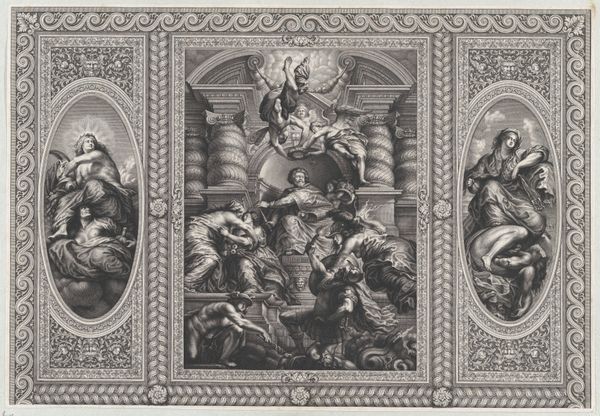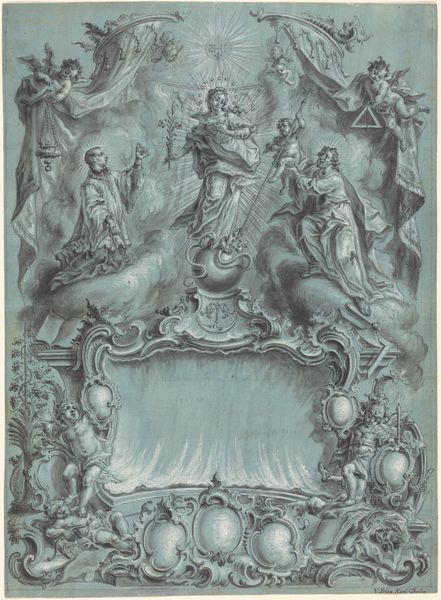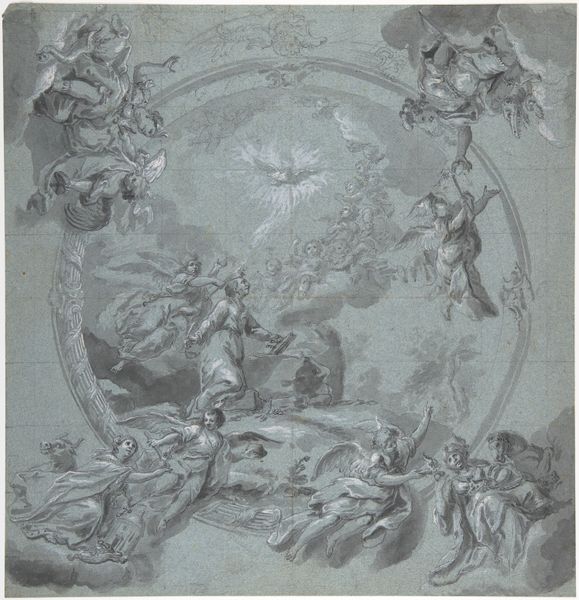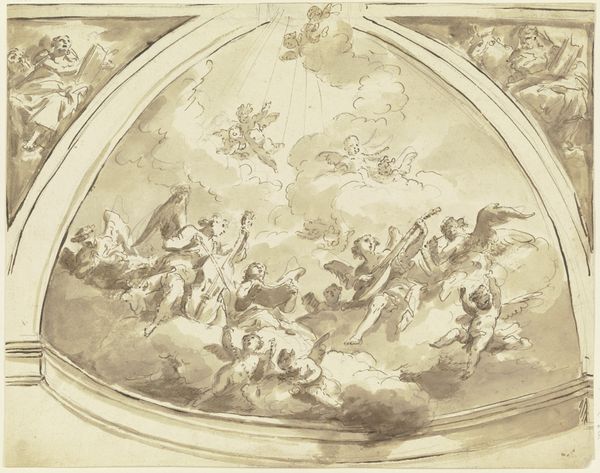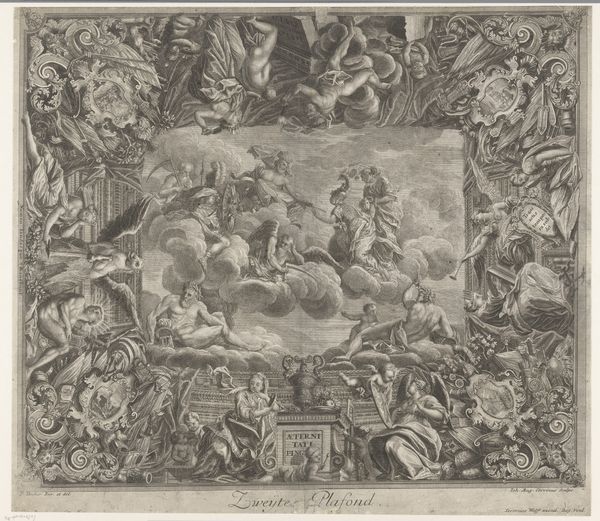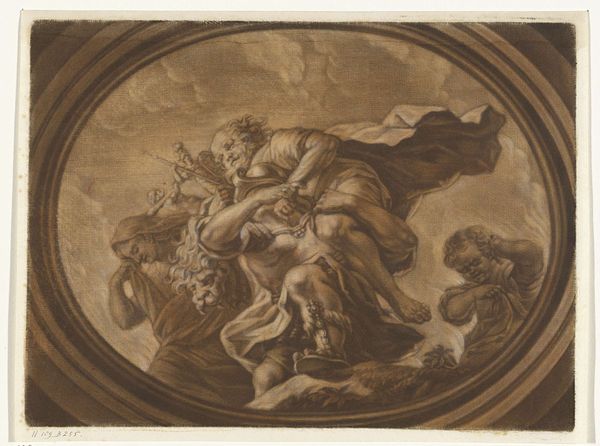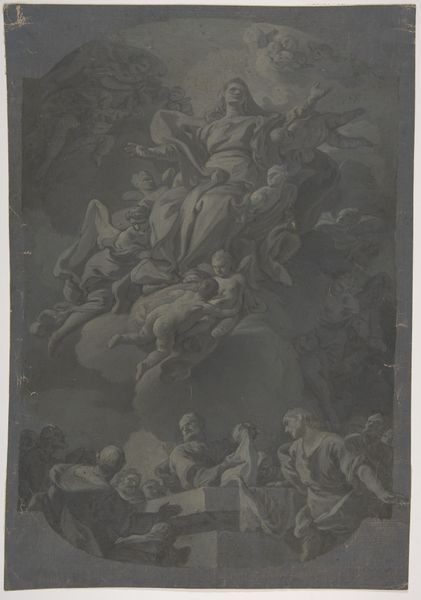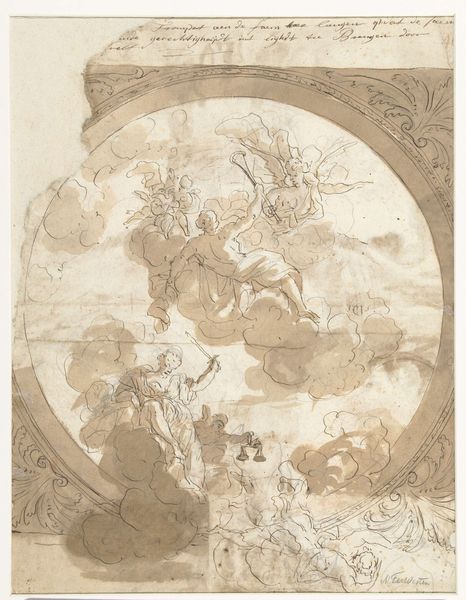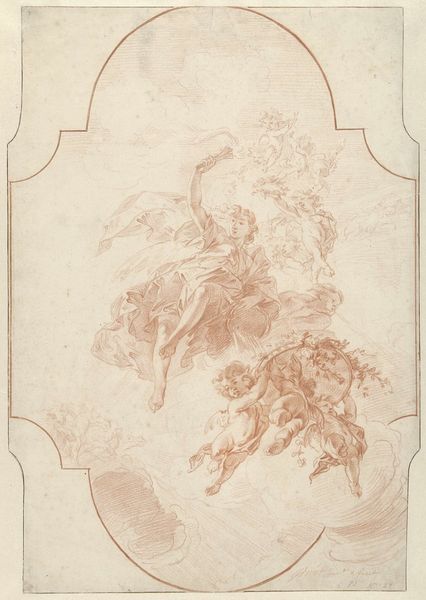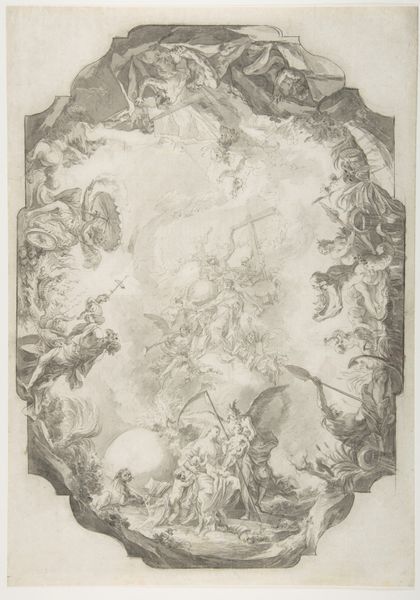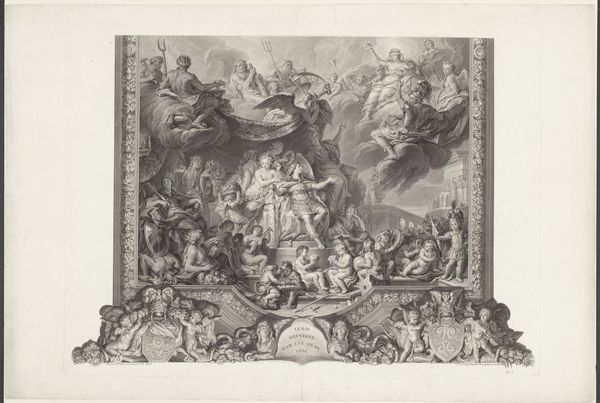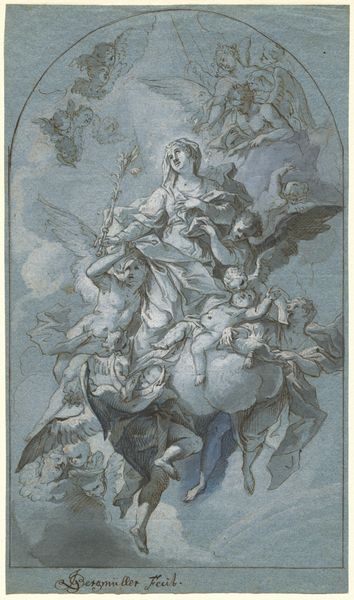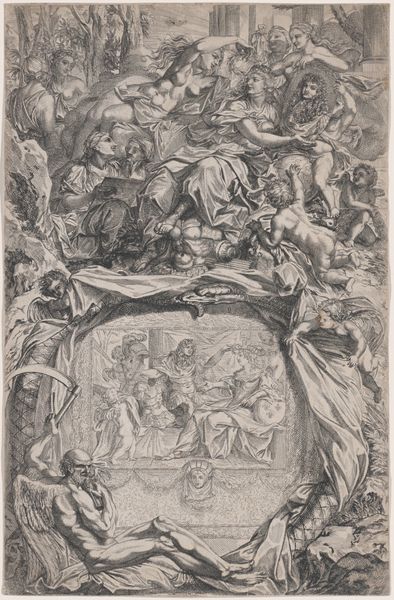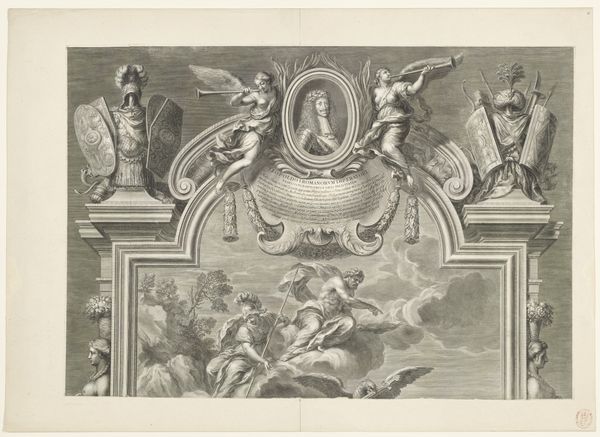
Study for the Decoration of a Vault 1754 - 1815
0:00
0:00
drawing, print
#
drawing
#
allegory
# print
#
figuration
#
history-painting
#
academic-art
#
italian-renaissance
Dimensions: 9 15/16 x 16 in. (25.3 x 40.7 cm)
Copyright: Public Domain
Curator: The Metropolitan Museum of Art holds this beautiful "Study for the Decoration of a Vault" by Carlo Alberto Baratta. Created sometime between 1754 and 1815, it's a preliminary drawing exploring the possibilities for a larger decorative project. Editor: My first impression is the upward momentum. Despite the monochromatic tones, there's such lightness and movement here, a real sense of transcendence. It feels like a study in elevation, literally and figuratively. Curator: Absolutely. Baratta was deeply entrenched in the Italian Renaissance tradition, evident in his attention to form and the historical context of his allegorical figures. The drawing speaks to power structures, to the very ideologies embedded in visual culture and artistic patronage of that era. Editor: The visual rhetoric is clear. It almost feels…staged? The way the central figure, presumably a saint or goddess, is surrounded by adoring cherubs. It evokes notions of idealised femininity and submission in service of a higher, patriarchal order. The Renaissance roots are interesting considering we often discuss power dynamics differently today. Curator: Precisely. And consider the potential setting for such a vault decoration: a grand palace, perhaps, reinforcing dynastic power or religious authority. Baratta's choices about form, figuration and illusionism served a very real, worldly purpose, within strictures placed upon art institutions by elite groups. Editor: So it goes beyond mere decoration. What was Baratta hoping to communicate by representing female subjects with angels and swirling light? I wonder if women ever got tired of this limited perspective of their virtue and grace! Curator: It's a vital point to raise about representation and perspective during this period, to consider who had access to these visual narratives and whose voices remained excluded. It opens the door to consider its socio-cultural impact more acutely. Editor: It's easy to get lost in the beauty of the rendering, in the technical mastery of the shading, but interrogating it this way makes you appreciate that no image is ideologically neutral. Thanks for reminding us how complex these public symbols can be. Curator: Agreed. These studies remind us to constantly investigate the power dynamics encoded in art and its role in history.
Comments
No comments
Be the first to comment and join the conversation on the ultimate creative platform.
